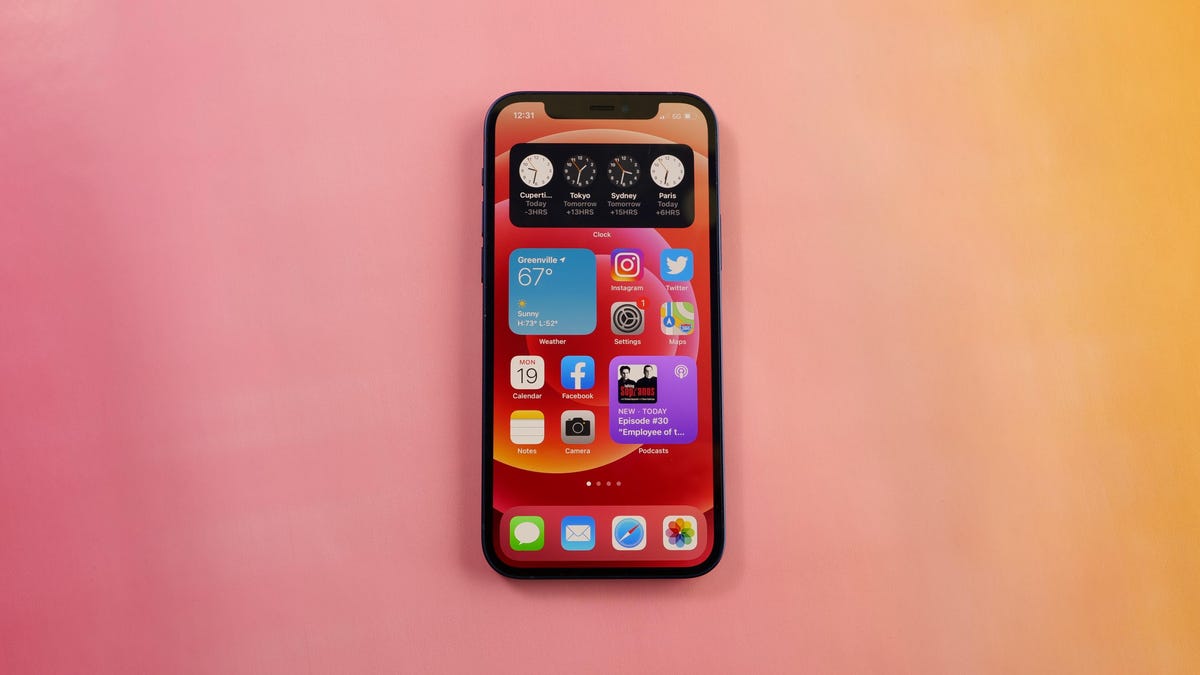iPhone 12 vs. XR, XS, X: What Apple changed in 2020, from 5G to MagSafe
A lot has changed since 2017.

Of the four iPhones launched in October, the iPhone 12 is equipped to suit most people. It's also one of our highest-rated phones ever. Starting at $799 (£799, AU$1,349), the iPhone 12 boasts a bunch of brand-new, buzzy features like 5G , a stronger ceramic-glass display called Ceramic Shield and a revamped design that includes flattened edges and embedded magnets. Those magnets allow users to attach an array of magnetic accessories, including Apple's wireless MagSafe charger and leather cardholders.
Perhaps the last time Apple made a comparable level of changes to its iPhones was in 2017, when it unveiled the iPhone X . Back then, Apple CEO Tim Cook called it, "The biggest leap forward since the original iPhone." For that iPhone, Apple did away with its predecessors' chunky bezels and physical home button, setting a new design standard for iPhones going forward. Although Apple has since discontinued the iPhone X, refurbished devices are still available at third-party retailers.
Apple's follow-up to the iPhone X was the iPhone XS (which is also discontinued, but available outside of Apple) and the best-selling iPhone XR, both of which were unveiled in 2018. Of the two, the iPhone XR is the more affordable option, delivering most of the high-end iPhone experience with a few compromises (it has an LCD screen instead of an OLED display, for example). Apple still sells the iPhone XR new and as expected, it has dropped its price. It now starts at $499 (£499, AU$849) for 64GB and $549 (£549, AU$929) for 128GB.
The big differences between the iPhone 12 compared to these three predecessors are its new features, like 5G connectivity and MagSafe. As always, Apple made upgrades to core specs like the processor and camera hardware. It also runs the latest iOS 14 out of the box, though the other iPhones are compatible with the update. For a spec-by-spec comparison, take a look at our chart below.
iPhone 12 vs. iPhone XR vs. iPhone X vs. iPhone XS
| Apple iPhone 12 | iPhone XR | iPhone X | iPhone XS | |
|---|---|---|---|---|
| Display size, resolution | 6.1-inch OLED; 2,532x1,170 pixels | 6.1-inch LCD; 1,792x828 pixels | 5.8-inch OLED; 2,436x1,125 pixels | 5.8-inch OLED; 2,436x1,125 pixels |
| Pixel density | 460 ppi | 326 ppi | 458 ppi | 458 ppi |
| Dimensions (Inches) | 5.78 x 2.82 x 0.29 in | 5.9 x 3.0 x 0.33 in | 5.7 x 2.79 x 0.30 in | 5.7 x 2.8 x 0.3 in |
| Dimensions (Millimeters) | 146.7 x 71.5 x 7.4 mm | 150.9 x75.7 x 8.3 mm | 143.6 x 70.9 x 7.7 mm | 143.6 x 70.9 x 7.7 mm |
| Weight (Ounces, Grams) | 5.78 oz; 164 g | 6.8 oz; 194 g | 6.14 oz; 174 g | 6.2 oz; 177g |
| Mobile software (at launch) | iOS 14 | iOS 12 | iOS 11 | iOS 12 |
| Camera | 12-megapixel (wide), 12-megapixel (ultrawide) | 12-megapixel (wide) | 12-megapixel (wide), 12-megapixel (ultrawide) | 12-megapixel (wide), 12-megapixel (ultrawide) |
| Front-facing camera | 12-megapixel | 7-megapixel | 7-megapixel | 7-megapixel |
| Video capture | 4K | 4K | 4K | 4K |
| Processor | Apple A14 Bionic | Apple A12 Bionic | Apple A11 Bionic | Apple A12 Bionic |
| Storage | 64GB, 128GB, 256GB | 64GB, 128GB, 256GB | 64GB, 256GB | 64GB, 256GB, 512GB |
| Expandable storage | None | None | None | None |
| Battery | Undisclosed; Apple lists 15 hours of video playback | Not disclosed, but Apple claims it will last 90 min. longer than iPhone 8 Plus | Not disclosed | Not disclosed, but Apple claims it will last 30 min. longer than iPhone X |
| Fingerprint sensor | None (Face ID) | None (Face ID) | None (Face ID ) | None (Face ID) |
| Connector | Lightning | Lightning | Lightning | Lightning |
| Headphone jack | No | No | No | No |
| Special features | 5G enabled; MagSafe; water resistant (IP68); wireless charging; dual-SIM capabilities (nano-SIM and e-SIM) | Water-resistant: IP67, dual-SIM capabilities (nano-SIM and e-SIM); wireless charging; Face ID; Memoji | Water resistant (IP67); wireless charging; Face ID; Animoji | Water-resistant (IP68); dual-SIM capabilities (nano-SIM and e-SIM); wireless charging; Face ID; Memoji |
| Price at launch (off-contract, USD) | $829 (64GB), $879 (128GB), $979 (256GB) | $749 (64GB), $799 (128GB), $899 (256GB) | $999 (64GB), $1,149 (256GB) | $999 (64GB), $1,149 (256GB), $1,349 (512GB) |
| Price (GBP) at launch | £799 (64GB), £849 (128GB), £949 (256GB) | £749 (64GB), £799 (128GB), £899 (256GB) | £999 (64GB), £1,149 (256GB) | £999 (64GB), £1,149 (256GB), £1,349 (512GB) |
| Price (AUD) at launch | AU$1,349 (64GB), AU$1,429 (128GB), AU$1,599 (256GB) | AU$1,229 (64GB), AU$1,299 (128GB), AU$1,479 (256GB) | AU$1,579 (64GB), AU$1,829 (256GB) | AU$1,629 (64GB), AU$1,879 (256GB), AU$2,199 (512GB) |
*prices are at launch

